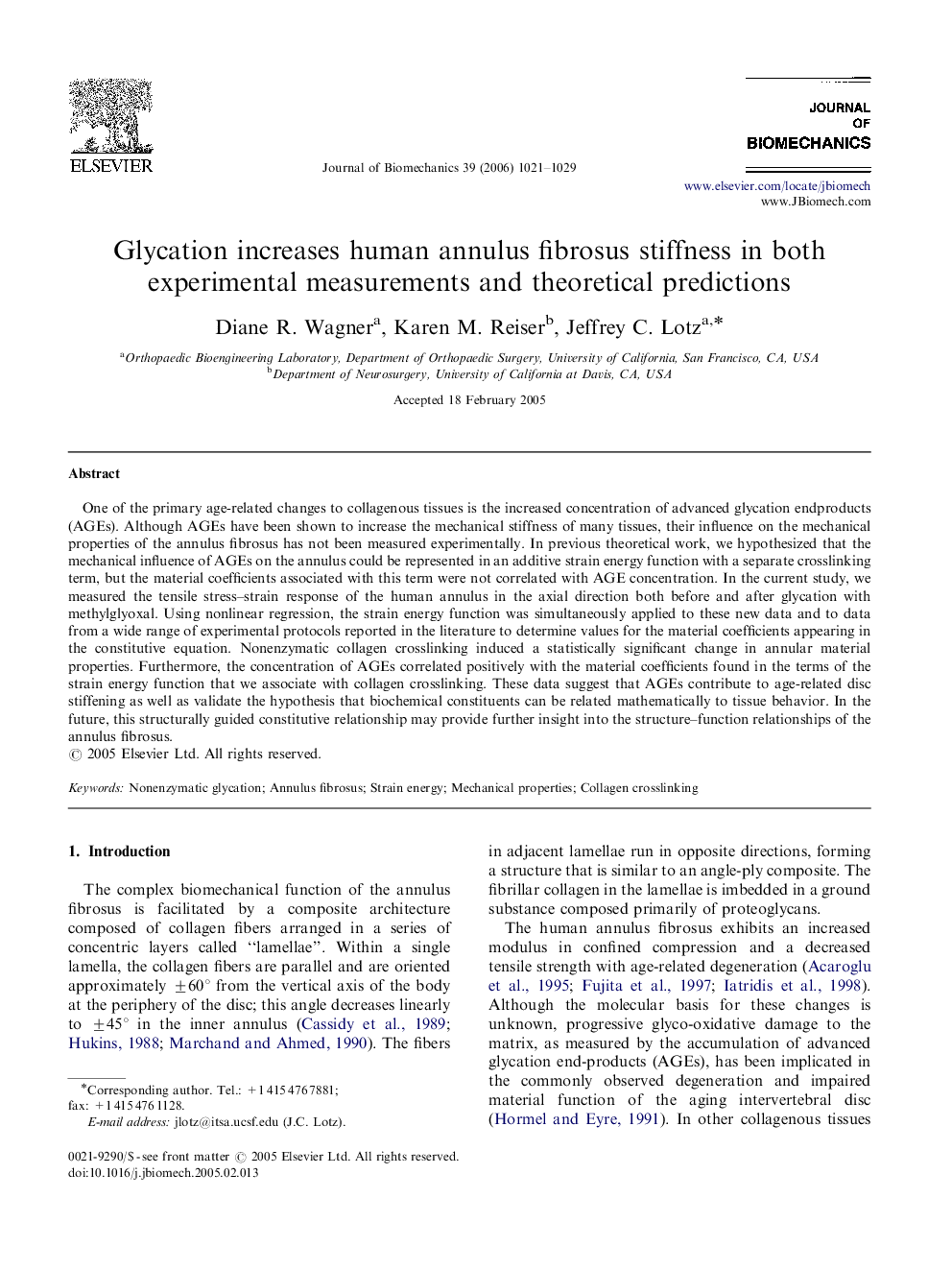| Article ID | Journal | Published Year | Pages | File Type |
|---|---|---|---|---|
| 874901 | Journal of Biomechanics | 2006 | 9 Pages |
One of the primary age-related changes to collagenous tissues is the increased concentration of advanced glycation endproducts (AGEs). Although AGEs have been shown to increase the mechanical stiffness of many tissues, their influence on the mechanical properties of the annulus fibrosus has not been measured experimentally. In previous theoretical work, we hypothesized that the mechanical influence of AGEs on the annulus could be represented in an additive strain energy function with a separate crosslinking term, but the material coefficients associated with this term were not correlated with AGE concentration. In the current study, we measured the tensile stress–strain response of the human annulus in the axial direction both before and after glycation with methylglyoxal. Using nonlinear regression, the strain energy function was simultaneously applied to these new data and to data from a wide range of experimental protocols reported in the literature to determine values for the material coefficients appearing in the constitutive equation. Nonenzymatic collagen crosslinking induced a statistically significant change in annular material properties. Furthermore, the concentration of AGEs correlated positively with the material coefficients found in the terms of the strain energy function that we associate with collagen crosslinking. These data suggest that AGEs contribute to age-related disc stiffening as well as validate the hypothesis that biochemical constituents can be related mathematically to tissue behavior. In the future, this structurally guided constitutive relationship may provide further insight into the structure–function relationships of the annulus fibrosus.
